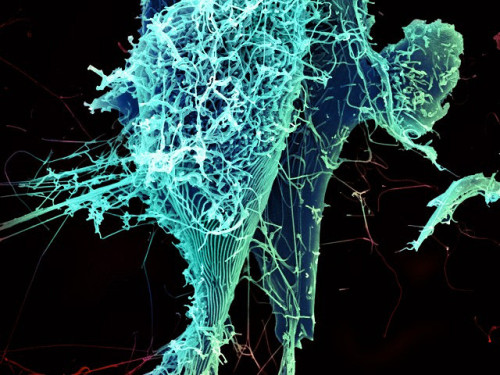Evolution of Ebola Virus – Where are we now?Scientists continue to study the evolution of th
Evolution of Ebola Virus – Where are we now? Scientists continue to study the evolution of the Ebola virus following the West African outbreak to determine how extraordinary numbers of humans became infected. Their results showed genetic changes occurring as the virus transmitted from human to human. To be sure, the theory was put to test. Researchers focused on the surface protein which the virus uses to bind a protein receptor on the surface of the target cell in order to gain entry. After identifying genetic changes accruing in the surface protein, synthetic clones were generated to see if mutant proteins behave differently to those seen in virus samples at the start of the outbreak.The data was clear, a number of genetic changes that occurred during the outbreak increased infectivity. One change in particular, a substitution of an amino acid involved in receptor binding, was particularly striking: not simply because it dramatically increased infectivity, but also because it was present in viruses that dominated the West African outbreak.Another twist from the study, mutations that increased infectivity in human cells seemed to reduce the ability of the protein to mediate entry into cells obtained from fruit bat cells - said to be the natural host for ebola virus.Unprecedented number of human to human transmissions gave the virus an opportunity to adapt to humans; an opportunity the virus didn’t miss.Read moreImages: Credit: NIAID; String-like Ebola virus particles are shedding from an infected cell in this electron micrograph. Credit: Nixxphotography; Ebola Virus Disease Credit: Credit Maurizio De Angelis, Wellcome Images; Ebola virus structure, illustration -- source link
#virus ebola#medical#medical research#viruses#human health#human disease#human cells#nurses#human biology#mutation#research#genetics#medicine#genetic changes#science#infection


